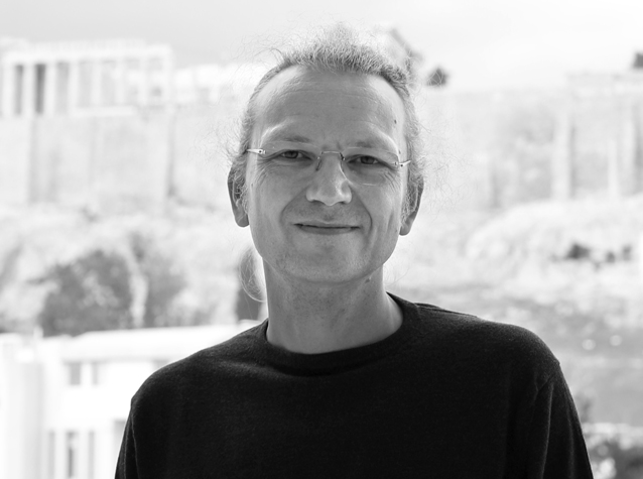The iconic BIC razor was born in 1975 and has become a mainstay of personal grooming. Now, in its latest chapter, BIC Shave Club delivers performance razors direct to users on a subscription basis. 
With experience working in Italy for Mario Bellini and Stefano Giovannoni, in the UK at Native Design, and at Lenovo in China, Jesper Brehmer tells us about his Danish childhood and meeting his own role models.
You can learn more about Bic Shave Club, the razor company’s online subscription service, here: bicshaveclub.com | @BICSHAVECLUB_UK
What inspired you to become a designer?
I’m Danish, so it goes without saying that Lego and Arne Jacobsen deeply influenced me. My uncle was pilot of the Lego CEO’s business jet and, as a child, I had an endless supply of building blocks. I spent entire days playing with it.
I also grew up in a house designed by Arne Jacobsen, the grandmaster of Danish design, and I was taken by the care of his solutions, thought through down to the tiniest detail.
Therefore, I knew from an early age that I wanted to create things that would improve other people’s lives.
What do you most enjoy about your job?
I am driven by finding solutions, not just solving problems. I always seek to discover the unexpected angle that brings a product or a process from simply being competitive to being one that sets a new standard.
What was your first job after you finished studying, and what impact has it had on the rest of your career?
My first job was at Raul Barbieri’s studio in Milano, the main designer of Rexite’s products. This was extremely lucky, as in addition to furniture design, I had the opportunity to work on projects employing plastic materials and functional, mechanical solutions, which meant that from the beginning, I had to face challenging but very varied types of projects.
After two years at Barbieri’s studio, I went to work for Mario Bellini, one of the most influential Italian designers of the last and this century. This had a lasting impression on me, which continues to inspire me today.
What have been the biggest challenges you’ve faced in getting to where you are?
Every day, we are challenged to make choices. In my case, the trick for good decision making is to trust your gut feeling up to a certain point, and genuinely try to view design solutions from all different angles.
My good friend Christian Madsbjerg has written a book describing this particular mindset, The Moment of Clarity, which is about the moment that suddenly everything makes sense to all the parties involved.
What has been your career high point or most memorable work moment to date?
At Bellini’s studio, I was working for three years on the Vitra Ypsilon office chair. Seeing how many times it was later copied, it at first upset me, but eventually I realised that the reason [for the imitations] was that we had not only made a new design, but we had also created a new chair archetype.
More recently, it was picking up the IF Gold Prize for the Lenovo Yoga design at BMW Welt in Munich.
Last but not least was my first day here at Bic, the most iconic plastic goods manufacturer on earth.
In terms of your career, which figures have been role models to you?
I have had the privilege to either work or study with my role models. For example, Marc Newson and James Irvine were teachers on my design course. And besides Mario Bellini, who I mentioned previously, I also worked closely with Richard Sapper at Lenovo.
In addition, Anders Byriel of Kvadrat is a constant source of inspiration to me, for his exceptional sense for both business and art.
These are all extraordinary people who have profoundly shaped my worldview.
On which design tools do you most rely in your day-to-day work?
At Bic, we use a state-of-the-art mix of mechanical design and visualisation tools.
This allows us to rapidly transform ideas into working prototypes and quickly test them.
Visual communication is one of our strengths and has become central to our development process, due to the positive return in terms of discussion, evaluation and team alignment.
I have 20 years’ experience in 3D and, although my day-to-day work is now more centred around communication, I thoroughly enjoy it when I finally get a chance to get my hands dirty!
What are you excited about in the future of your industry?
These times could hardly be more exciting for design. So much is evolving. For the first time, we have the tools to measure the impact of design on the business and these have shown how best design practices affect a company’s competitiveness.
These insights have given the designer new and tougher responsibilities, but at the same time, they have initiated the adoption of design thinking methods in many other areas of the business.
This, in turn, challenges designers to grow with the job, to gain a new overview and to learn skills that were unthinkable when we were at university.
If you were hosting a dinner party in which you could invite three figures from any time, who would you invite and why?
At my party, I would invite Igor Stravinsky, Pablo Picasso and Hedy Lamarr for an evening of music, arts and science!
With their vision, these people radically changed their own times and also influenced the way we are today.






